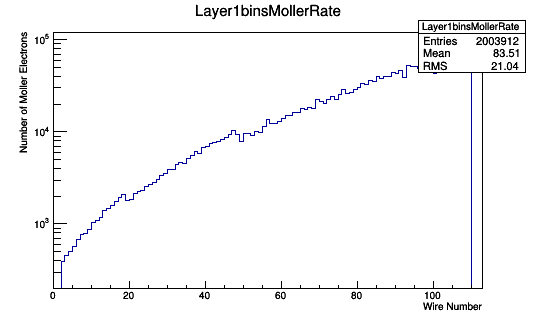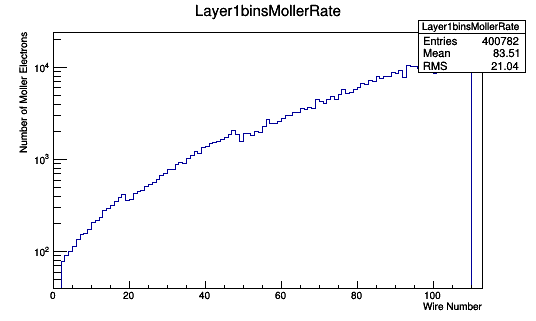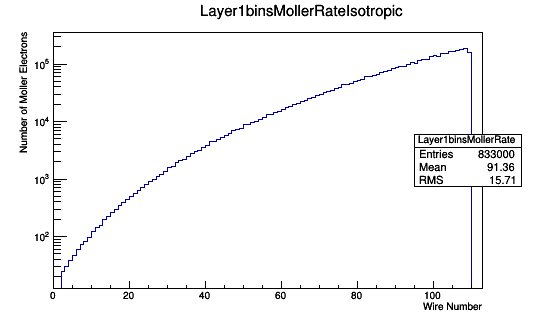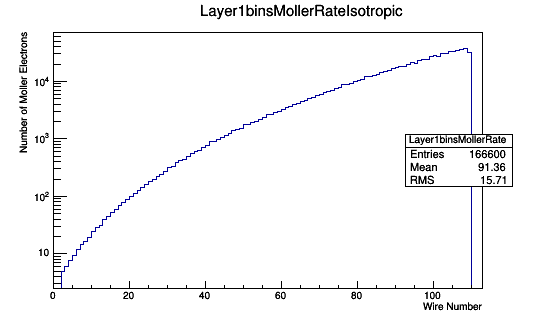Isotropic Weighted Moller Distribution in GEMC
Jump to navigation
Jump to search




Isotropic in CM
Assuming a 1cm long target of LH2 where around 2% of the incident electrons will result in a Moller electron,
TH1F *Combo=new TH1F("Layer1binsMollerRate","Layer1binsMollerRate",113,0,113);
Combo->Add(Layer1binsWeighted,23.8);
Combo->Draw();

Assuming a 5cm long target of LH2 where around 2% of the incident electrons will result in a Moller electron,
TH1F *Combo=new TH1F("Layer1binsMollerRate","Layer1binsMollerRate",113,0,113);
Combo->Add(Layer1binsWeighted,4.76);
Combo->Draw();

Isotropic in Lab
Assuming a 1cm long target of LH2 where around 2% of the incident electrons will result in a Moller electron,
TH1F *Combo=new TH1F("Layer1binsMollerRate","Layer1binsMollerRate",113,0,113);
Combo->Add(Layer1binsWeighted,23.8);
Combo->Draw();

Assuming a 5cm long target of LH2 where around 2% of the incident electrons will result in a Moller electron,
TH1F *Combo=new TH1F("Layer1binsMollerRate","Layer1binsMollerRate",113,0,113);
Combo->Add(Layer1binsWeighted,4.76);
Combo->Draw();
